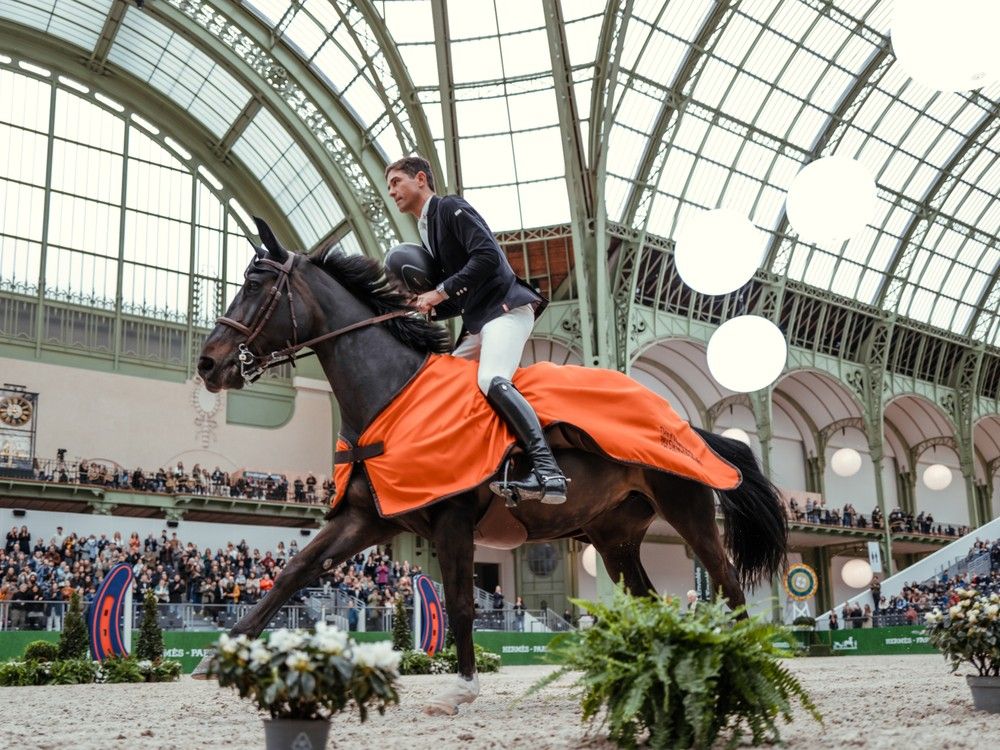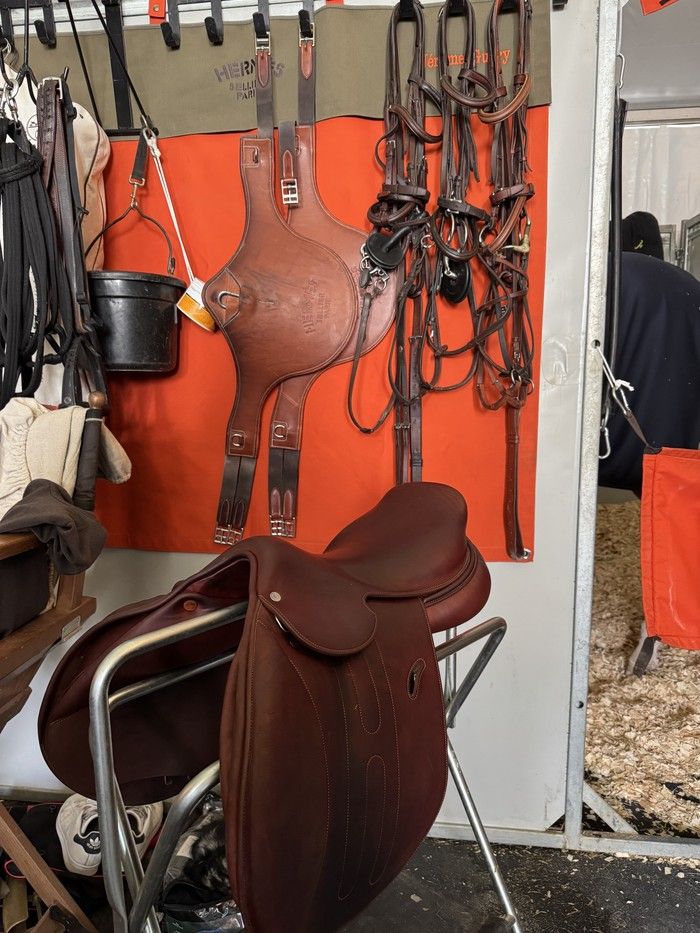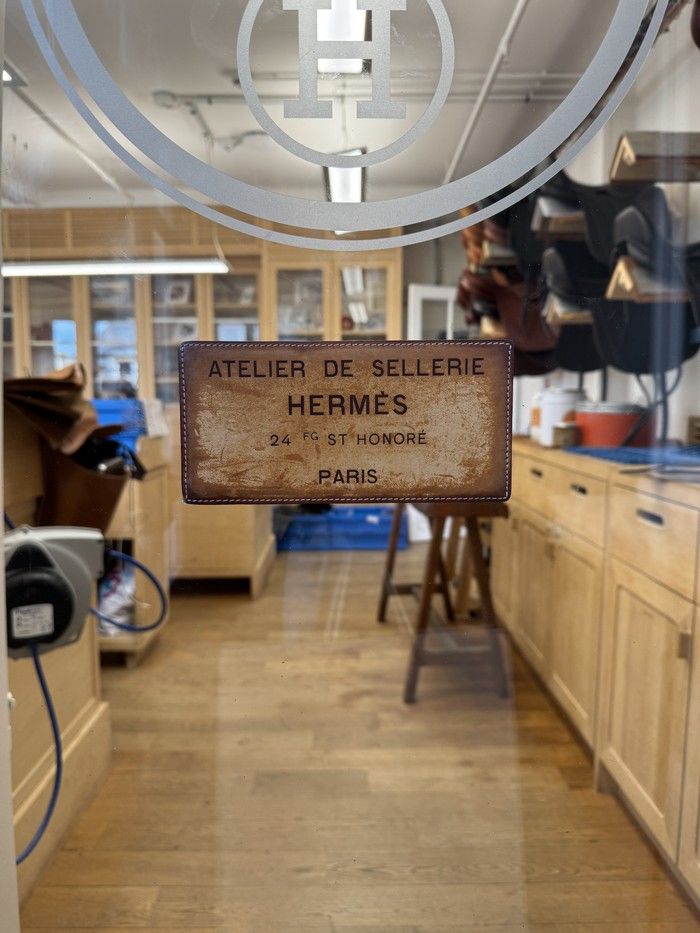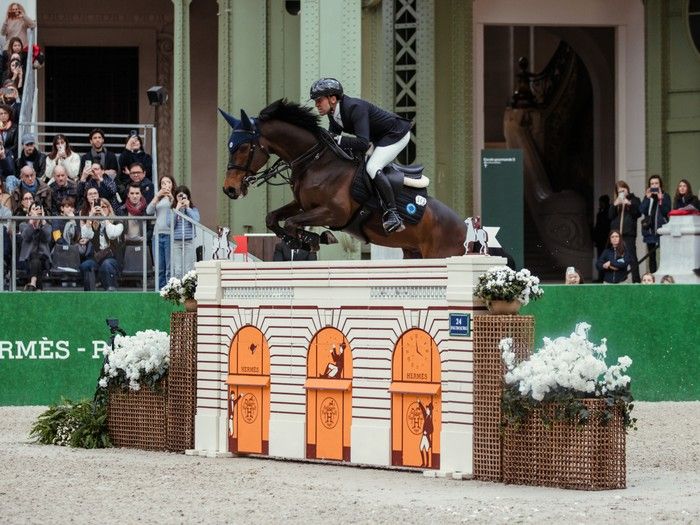The true heart of Hermès leather-making isn't a Birkin or a Kelly. It's a saddle


Paris is a memorable city. One made even more so, it turns out, with the addition of horses.
The capital of France, which sees some 50 million tourists visit each year, is home to many iconic landmarks, must-see museums, delicious food, and world-renowned fashion brands.
And for a few days this spring, the City of Lights was also home to
, an international equestrian competition.
Set in the Grand Palais on March 21-23, the 15th edition of the show-jumping tournament brought horses to the heart of Paris with temporary stables erected directly beside the famous Avenue des Champs-Élysées.
Inside the tented rows, oversized orb-shaped lighting bathed the stalls in a warm, soft glow while large swaths of faux turf provided a soft footing for the equine athletes to make their way to the competition arena.
Riders of the Paris Metro disembarking at a nearby station were greeted with a glimpse of the horses warming up in a small sand arena located directly beside the entrance of the busy transit station.
While inside the cavernous venue, the competition featured some of the world’s best horse-and-rider pairings as they sailed over obstacles under the massive glass-domed roof.
It was an awesome display of horse power in a historic and stunning setting.

The first customer of Hermès
While handbags such as the Birkin or Kelly have long been coveted leather goods from the luxury French house, there is another design at the heart of its leather creation —
.
“We often say at Hermès that the horse was Hermès’ first client. (Former Hermès Chairman) Jean-Louis Dumas used to say this,” says Chloé Nobecourt, director of the Hermès Equestrian Métier. “
And actually it is very true. Hermès was founded in 1837 as a harness maker. And saddles arrived right after.”
Thierry Hermès started the brand as a small harness-making shop in Paris, setting out to create horsewear that was lightweight and refined — a stark contrast to the heavy, decorated designs that were popular at the time.
“For two main reasons,” Nobecourt explains. “The first was to free the horse’s movement. And the second was to reveal its beauty.”
From that simple ambition, a multibillion-dollar brand has been built, applying that same approach of good design, simplicity and quality to a vast array of product categories.
“Still today, this founding principle of functionality, lightness, elegance of movement as we like to say, and comfort are still embedded in every creation that we make,” says Nobecourt.

A visit to the centre of creation
Located at 24 Rue du Faubourg Saint-Honoré, the flagship store of Hermès is a hive of retail, history and creation for the brand.
Around the corner from the Faubourg Saint Honoré store, through a big set of wooden doors reachable only after passing through a security checkpoint, many of the brand’s standout pieces are made. Unbeknownst to many, this downtown Paris location has long been an epicentre of creation for the brand, including its made-to-measure saddles.
“Most people don’t know that actually, since 1880, the workshop is there,” says Nobecourt.
In 2023, a new workshop in Normandy, an epicentre of equestrian sport and culture in France, according to Nobecourt, was inaugurated. But a primary aspect of the saddle-making business is still carried out each day above the flagship boutique.
“Faubourg being the heart of Hermès, it’s more than a flagship, it’s a family house. It’s the beating heart of Hermès,” Nobecourt says. “And Sellierie is the heart of Hermès. They should remain together.”
During a recent tour, artisans could be seen working on a variety of pieces, including handbags, in various stages of creation.
And through a glass door, marked simply with an antique leather tag reading ‘Atelier de Sellerie Hermès,’ is precisely where many of the bespoke saddles come to be.
A wall of saddle hooks displays finished saddles like stunning art pieces. Wooden work tables, punctuated with tools, were hubs of activity. On a bookshelf, a row of white notebooks stood, spines facing out. These books contain the detailed measurements of every single saddle ever made by the house of Hermès.
“Every saddle we make is double made to measure. We make them for the horse first and then the rider,” says Nobecourt. “I always put the horse first because a rider, when you are not comfortable, you will say it out loud, which is easier to work with. We can speak with you about your riding style, do you feel comfortable, and how to adjust?
“But the horse won’t speak. So we need to pay extra attention to make sure the saddle we make for him will fit him, that it will free his movement and will allow him to perform at his best.”
Each saddle is made by one craftsperson, from start to finish, requiring approximately 30 hours of work to create, according to Nobecourt. The made-to-measure saddles are available by special order in Canada through an Hermès boutique.
“When a craftsperson makes a saddle, they knows for who the saddle is for,” she says. This includes the saddles destined for the company’s 14 partner riders (including French professional Simon Delestre, who won the Grand Prix at Saut Hermès aboard the horse Cayman Jolly Jumpe) who ride in the company’s saddles — and provide valuable feedback about fit and feel of the top-tier tack.
“It’s crucial,” Nobecourt says of the feedback the brand receives from the professional equestrians. “We often call it a triple alliance. The partner riders, the saddle experts, and the craftsmen.
“They help us to always improve.”

For Nobecourt, an equestrian herself, the opportunity to see the saddles in action at Saut Hermès, so close to the origin of the brand’s story and creation, presents more than an opportunity to display the equestrian roots of Hermès.
“It’s a celebration of everyone’s love around horses,” she says with a smile as the sold-out crowd cheered a clear jumping round in the background. “It’s not just a competition, it’s much more than that.”
Postmedia was a guest of Hermès in Paris. The brand neither reviewed nor approved this article.
Source: vancouversun.com

